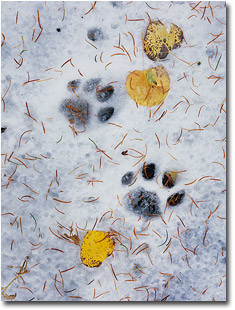Landscape Artistry
Ten Tips for Becoming a Better Landscape ArtistText and photography copyright Guy Tal
9. Follow a Workflow
Between the successful operation of your camera, looking for an optimal composition, applying the various rules, eliminating potential problems, calculating exposure, and the myriad other minutia that go into making a landscape image, it is understandably easy to miss something here and there. The unfortunate result can be the loss of a once-in-a-lifetime masterpiece. Like other complex activities we engage in, from driving an automobile to cooking a gourmet dinner, we are less likely to miss things if we instinctively follow a well-defined process or recipe. As you set out to make images, take the time to note the steps you normally take, and the order which makes sense to you. Put it in writing and try to follow the same sequence of activities every time. Before you know it you will instinctively reach for the filters after focusing, automatically think “Rule of Thirds” as you identify interesting elements, and so on. Having spoken with a number of photographers, I found that while some activities naturally follow others, there is still some degree of variance. For example, I prefer to work when all my gear is laid out in front of me and is easy to access. Others I know prefer to peer through the finder and keep their packs on until the very last moment. I evaluate a scene through the ground glass of my camera and will often set it up just to see if I can find a working composition, while others will determine a composition before reaching for their camera. Find what works for you, take notes, and follow your workflow. The more you practice it, the faster and more accurate you will be, and the less likely you are to miss a step.
10. Think Like an Artist
In thinking about Landscape Photography as a form of art, what we really mean is that photography is a means of expression, a way for an artist to convey a mood, a concept, or a message to his or her audience. Like a brush is to the painter, a typewriter to the poet, and a chisel to the sculptor, so is a camera to the Landscape Artist. Elevated to the degree of art, photography becomes more about the artist’s inspiration and message, and how it manifests in the final piece, rather than about the mechanics of operating a camera. I find that some photographers tend to look at scenes in terms of the lens or camera body to use before evaluating what the most effective composition might be. Just like a composer does not worry about what pencil to use when writing a score, so I believe a photographer should not place as much weight on the technical specifics of capturing a scene. When considering Landscape Photography as an art, try to think like an artist first. Approach a scene with the intent of capturing it in the most effective way. Be inspired by it first and capture it second. Bring yourself to the same point a painter or a poet would, and let your creativity and vision define what you wish to create. Then proceed to use your photographic skill and technique for a successful execution. Go out, seek beauty, create art.
Guy Tal - NPN 0440
Editor's note - Be sure to see more of Guy's large format work on his website at http://scenicwild.com.
Comments on NPN landscape photography articles? Send them to the editor.
Previous Page Return to Page 1



| 


